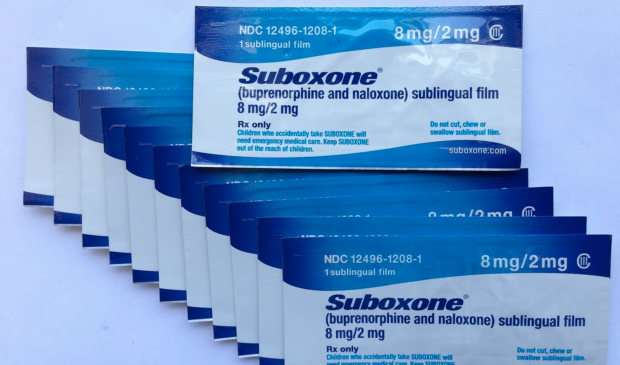EMS using medication-assisted treatment to reduce overdoses
Monday, November 14, 2022 by
Nina Hernandez Two Travis County programs are proving successful at reducing opioid overdoses and connecting people in need with treatment at a time when deaths from synthetic opioids such as fentanyl are on the rise nationally.
Last week, the Public Safety Commission heard an update from Austin-Travis County EMS on the city’s opioid use disorder support and buprenorphine bridge programs.
The opioid use disorder support program began in the summer of 2018 so that the city could make use of available state and federal funding for supplies like naloxone, an opioid-overdose antidote. The program was part of a growth in treatment options for opioid use disorder, such as medication-assisted treatment, or MAT, which has proved to be more successful than traditional abstinence-only rehab programs.
In 2018, there wasn’t yet evidence of significant fentanyl use in Travis County. But ATCEMS Commander Blake Hardy said the department knew it was likely only “a matter of time” before those figures increased along with national trends.
The goal was for community health paramedics to respond to people who have experienced an overdose within 24 hours. Roughly 30 percent of individuals who die from an opioid overdose have had contact with EMS within the past year and a large proportion have been seen within the past 48 hours.
“We’re cutting that critical 48 hours in half,” Hardy said. “So within 24 hours of their overdose, they’re going to get a community health paramedic member out to see them and to educate them on the treatments that are available, the availability of MAT services. A lot of times that’s reeducating them on what they thought they knew recovery could be like.”
When the program started in 2018, first responders were encountering around 30 opioid overdoses per month and distributed roughly 30 rescue kits a month into the community. On average, people would average four rescue kits before 911 contact.
Hardy said the team is proactive in handing out rescue kits to anyone in the community who might witness an overdose. The response program works to directly connect people who have experienced an overdose to medication-assisted treatment programs, which include peer-recovery coaches, mental health support and medical providers.
“We do a lot of educating and a lot of connecting people directly into programs,” Hardy said. “We don’t do referrals. It’s all warm handoffs to make sure people actually get into the program, stay with the program, and then work through finding what we can do to help them stay in it or to navigate back, if necessary.”
The buprenorphine bridge program was created by ATCEMS because the department found that, while treatment services are available in the region, there’s an approximately seven-day lag time in getting people into these programs. Though many individuals may want to stop using, the side effects of withdrawal can make it difficult for them to do so.
“We hear it from patients time and time again,” Hardy said. “They don’t use to get high; they use because that’s the only way they can physically function and not be absolutely miserable. They’re in withdrawal because they’ve decided, ‘I’m done, I don’t wanna do this anymore,’ and we didn’t have anything we could offer them.”
Hardy said local emergency rooms typically don’t treat opiate withdrawal aggressively because many of the medications require followup care. Patients may receive nausea medicine and an over-the-counter pain medication, but “neither of those goes very far in withdrawal,” Hardy said.
But ATCEMS found an option. Buprenorphine – brand name Suboxone – eliminates withdrawal symptoms and prevents the patient from overdosing before treatment is available. Buprenorphine is different from treatments like methadone because it blocks the effects of opioids on brain receptors.
“It’s designed to completely eliminate someone’s withdrawal symptoms, and then carry them symptom-free until they enter a treatment program,” Hardy said. “It’s a short-term bridge to get people up and into a program successfully.” Buprenorphine, which has few side effects and can be taken at home in a sublingual form, can also be used on a long-term basis to keep people from relapsing.
There are three requirements to enter the buprenorphine bridge program. The patient must stay active in enrolling in the program, must meet with a medic daily to receive their daily dose, and must be in withdrawal in order to begin.
The bridge program, which is internally funded by the department, has so far treated 236 patients, administered 1,290 doses of buprenorphine and achieved a 92 percent success rate for patients starting MAT. Ninety-two percent of those patients are still active after the first week. Forty-four percent of program patients are experiencing homelessness.
Hardy said the program’s success was a surprise. When the bridge program started, the team only expected to serve people it had already contacted through the opioid support program. Instead it spread through word of mouth. Hardy said people asked, “I need what you did for my friend.” When the program started in November 2020, it went through what was anticipated to be a six-month supply of buprenorphine in just six weeks.
Local MAT programs report referrals from the program are more successful than other program participants. “It makes sense to us, because we’ve been coaching them for up to a week,” Hardy said, noting that the lag time for a patient to enter treatment is now down to a four-day average.
Two local emergency rooms have certified their doctors to administer buprenorphine and have started to refer potential patients to the bridge program. The department is also working with CommUnityCare street teams to reach further into the community.
The department has plans to add additional staff members to the community health team, but the biggest concern, Hardy said, is finding a backup for the federal grant funding the department’s naloxone supply. If that funding source disappears, there are no plans for how the city would continue the program. ATCEMS is in talks with Austin Public Health to identify alternative sources.
Austin began to see its first spikes in opioid overdoses in early 2020. Before then, the county averaged between one and two overdoses a day; currently, ATCEMS is responding to about three times that amount. Some months, the department hands out 60-80 opioid rescue kits.
The increase is largely due to fentanyl, according to Captain Mike Sasser. In talks with the community, Sasser said people have grown “more and more comfortable with the fact that fentanyl is in everything and so they’re just using fentanyl at this point.”
When asked how the Public Safety Commission can support the work, Hardy said, “Keep funding us and community health.”
The Austin Monitor’s work is made possible by donations from the community. Though our reporting covers donors from time to time, we are careful to keep business and editorial efforts separate while maintaining transparency. A complete list of donors is available here, and our code of ethics is explained here.
You're a community leader
And we’re honored you look to us for serious, in-depth news. You know a strong community needs local and dedicated watchdog reporting. We’re here for you and that won’t change. Now will you take the powerful next step and support our nonprofit news organization?






